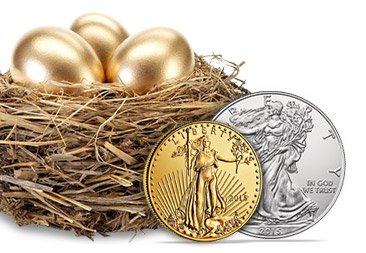
Recycling Precious Metals
The Role of Recycling in Creating Supply
Part of gold and silver demand is met by recycling existing metal. Because gold is about 70 times more expensive than silver, more care is taken to ensure no gold is lost whether it is in the form of jewelry, coins or in industrial products. Silver, on the other hand, due to its relative low price, is often mislaid or simply thrown away.
According to the Silver Institute, the percentage of silver supply coming from recycled silver was about 12-15% of overall supply in 2014 and 2015, with the remaining supply coming from mining production. According to the World Gold Council, over the past ten years, about 33% of gold supply came from recycled gold and about two thirds from mining supply.
When does recycling increase?
Higher prices
Higher prices generally mean lower jewelry demand for both metals and an increase in recycling as holders of gold and silver look to “cash in” on the higher prices. Conversely, lower prices generally mean higher jewelry demand and less gold and silver coming to market as ‘scrap” to be recycled.
Silver prices usually rise much faster than gold prices in a bull market and fall much hard than gold in a bear market. When silver prices rise, so does the amount of recycled silver as a percentage of silver supply. When silver prices fall, the amount of silver as a percentage of silver supply drops sharply as lower prices make recycling silver almost not worth the effort for those holding small amounts of silver coins, jewelry or silverware.
Gold recycling as a percentage of supply is less volatile than silver recycling as a percentage of supply in part because gold’s price is less volatile. Also because of the historically high price of gold and it desirability, it is customary to recycle gold irrespective of fluctuations in price and is rarely discarded without a view of retrieval as is often the practice with silver.
Gold and silver industrial demand is economically sensitive rather the price sensitive. If industry is booming, more silver and gold will be used for industrial applications, usually irrespective of the price. About 55% of silver demand comes from industrial uses, whereas only 10% of gold demand is for industrial uses. A good portion of silver used in industry for electronics or solar panels often becomes part of industrial waste and is not retrieved because it is not economical to do so.
In contrast, recycling gold and silver is relatively easy and inexpensive when it is in the form of jewelry, coins and bars. It simply needs to be melted down and recast into whatever form required. Recycling gold and silver from end of life electronics or other industrial products like solar panels requires collection and extraction techniques that can make such endeavors uneconomical.
Import duties, taxes
Higher import duties may lead to higher prices and/or a shortage of gold or silver in a particular country. In such circumstances the percentage of recycled gold or silver may rise as a percentage of supply. For example, higher gold prices in India, coupled with higher import duties and taxes have led to recycled gold to account for up to 60% of gold supply this year.
Mining shortages
Mining strikes, work actions or closures could also lead to temporary shortages of freshly mined gold and silver. When mining supply dips, an increase in recycled gold and silver may be required to meet existing demand.
This article by BGASC is not, and should not be regarded as, investment advice or as a recommendation regarding any particular course of action.
